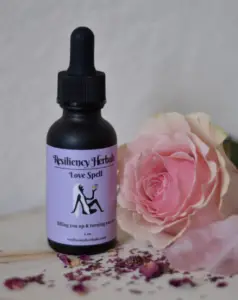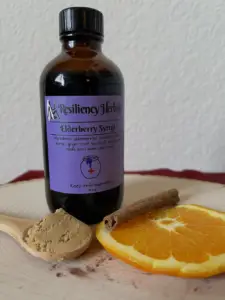An increasing number of people, either on their own or in conjunction with other treatments, have turned to herbal medications or products in recent years to better their health situations. There is an international “herbal renaissance” as herbs make a comeback. The World Health Organization estimates that 75% of people worldwide use herbs for essential medical purposes. In truth, using herbs and plants as medicine has been a proven method of healing since the dawn of time. Also, a lot of pharmaceutical and conventional pharmaceuticals are made straight from both natural and conventional treatments that are used all over the world. More than 53,000 species have been used in the past to perform herbal therapy, and some of these are in danger of extinction owing to overuse. Herbalism is a type of traditional medicine or folk medicine that relies on using plants and plant extracts to treat ailments. One of the primary forms of life on earth is plants and herbs, which make up the majority of traditional materia medica across the globe. There are thought to be 350,000 different plant species in existence (including ferns, bryophytes, and seed plants), of which 287,655 have been recognized as of 2004. Herbs, herbal materials, preparations, and finished products that use actual plant parts or other materials as active components are referred to as herbal medicine, also known as botanical medicine, phytomedicine, or phytotherapy.

In herbal therapy, seeds, berries, roots, leaves, fruits, bark, flowers, or even entire plants are employed as plant parts. Prior to the invention of aspirin, which is derived from Spiraea ulmaria and was previously prescribed for fever and swelling in Egyptian papyri and advised by the Greek Hippocrates for pain and fever, a man mostly relied on unrefined plant material to maintain health and treat ailments. Archeological studies have revealed that the use of herbal medicine dates as far back as 60,000 years ago in Iraq and 8,000 years ago in China, even though written records about medicinal plants date back at least 5,000 years to the Sumerians, who described well-established medicinal uses for plants like laurel, caraway, and thyme. Herbal medicine has been contested by practitioners of mainstream medicine since the development of western medicine (or “conventional” medicine) during the past century because of the lack of empirical proof in the context of modern medicine, despite its long history of successful usage. It’s interesting how things evolve throughout time. Due to the adverse effects of chemical medications, the absence of effective modern treatments for a number of chronic diseases, microbial resistance, and the unprecedented expenditure in pharmaceutical research and development, the use of herbs has increased recently (R&D). For instance, the US Food and Drug Administration (FDA) has only authorized roughly 1,200 brand-new medications since 1950.
Ancient Herbal Remedies
Indicators of yarrow, chamomile, and poplar have been discovered on the teeth plaque of Neanderthals going back to 60,000 BCE (Before the Common Era, formerly BC). This shows that plants have been essential to nourishment and health for a very long time, much before the beginning of recorded history. The Ebers papyrus, a collection of medicinal literature written by the Egyptians around 1500 BCE, comprises approximately 700 formulae. These documents are rather old, but the knowledge they contain is astoundingly current. It gives a precise explanation of the operation of the human circulatory system, including the presence of blood arteries and the role of the heart. In the Ebers Papyrus, plants including bayberry, aloe, and basil are listed. Other well-known herbalists in antiquity were the Greeks and the Romans. Hippocrates, a well-known Greek physician who is regarded as the “Father of Western Medicine,” held the view that diseases developed naturally in the body rather than as a result of a divine curse or superstitious beliefs. For rejecting the prevalent medical theories of the period, Hippocrates served 20 years in jail. He also published “The Complex Body” while there. Several of the ideas in this book are still relevant in contemporary medicine. Hippocrates famously said, “Let food be thy medicine, and medicine be thy food,” and employed a variety of herbal treatments in his medical practice. Willow bark was one of the plants Hippocrates discussed, along with its use for pain and fever. This was followed by modern medicine in the 1800s when aspirin was developed using the active chemicals from willow. Elderberry, which is now seeing a massive resurgence in popularity due to its potent immune-boosting properties, was also a favorite of the ancient Greeks.
Healing Herbal Traditions
An old kind of medicine called traditional Chinese medicine is being used today. One of the earliest listings of medicinal plants is found in TCM and is known as Shennong Ben Cao Jing. Shen Nong, a renowned physician who is believed to have lived about 2500 BCE, is credited with writing the book, which was first documented around 250 CE (Common Era). Whether Shen Nong existed or not has been questioned, but the herbal remedies and purposes for which Shen Nong is credited have been passed down through generations of oral tradition until the Chinese classic was assembled and recorded. The Shennong Ben Cao Jing includes minerals, herbs, forests, animals, fruits, and vegetables in its list of curative substances. Among the herbs listed are Ling Zhi Reishi mushroom, Mung Beans, Ginger, Ginseng, and other contemporary herbal heroes. Ayurveda was developing as a medical system in India at the same period. Sanskrit for “Science of Life” is Ayurveda. The origins of Ayurveda, which include yoga, meditation, astrology, and herbalism, may be dated back to 3300 BCE. Four collections of knowledge known as the Yajur Veda, Rig Veda, Sam Veda, and Atharva Veda serve as the foundation for ayurvedic medical techniques. The Ayurvedic practice of using plants and botanicals is described in each of the Vedas. In order to achieve equilibrium, ayurveda links plants to the elements and the elements to the bodily doshas. The primary Ayurveda plants, turmeric and holy basil, have long served as an inspiration for New Chapter formulations.
Modern And Future Herbalism
From the Salem Witch Trials’ botanical associations with witchcraft to the way medical students are taught about herbalism, the concept that herbalism is a forbidden subject has appeared several times throughout history. The American Medical Association (AMA) established the Council on Medical Education in 1904, which had a profound impact on the development of herbalism in North America and Canada. The American Medical Association (AMA) sought to establish clear requirements for medical schools to follow. Schools that failed to live up to these requirements were closed. Almost half of American medical schools disappeared or merged with major universities between 1910 and 1935.
Homeopathy, naturopathy, chiropractic, and osteopathic practice training was not permitted at these institutions since doing so would jeopardize their ability to maintain their accreditation, which was essential to their existence. It was clear that teaching on the therapeutic use of herbs was not a priority in medical curricula. Luckily, herbal medicine and folk medicine have come back into vogue in the last 50 years or so. Herbal products are readily available, and you may discover fantastic herbalists both online and in your neighborhood. Herbalism has a colorful past. It has always been a healing custom created by and for the populace. By the expertise of medical outsiders and rebels, herbalism has expanded. Modern scientific study confirms what early herbalists always knew: Herbs have amazing therapeutic ability.
Resiliency Herbals: Love Spell

This mixture of tinctures, floral essences, honey infusions, prayer, and ceremonies is meant to generate a warm, joyful feeling while also boosting your spirits and giving you the feeling that you may let go. Take a deep breath, calm down, and allow the potion to cover your being by taking a dropperful and placing it on your tongue or in one ounce of water.
Resiliency Herbals: Elderberry Syrup

To make sure that no cold, flu, or virus gets in the way throughout the winter, Resiliency Herbals has taken the traditional strong elderberry syrup and turned it up a level with even more immune boosting herbs. Imagine the best possible cold and flu medication without any side effects. Elderberries naturally contain high levels of vitamin C, the body’s most prevalent antioxidant, which may aid people with high blood pressure and prevent iron deficiency anemia in addition to lowering their chance of developing chronic diseases.
Difference Between Synthetic and Herbal Remedies
A comprehensive therapy that integrates the emotional, mental, and spiritual aspects is herbal therapy. Every naturopathic method takes lifestyle, emotional, mental, and spiritual issues into account. Herbal remedies typically don’t have “drug” effects or negative side effects. Although being widely used and generally thought to be harmless, medicinal herbs can really be harmful. When poisoning from medicinal plants has been documented, it is typically because the plants were misidentified in the condition they were sold in or because they were improperly prepared and administered by untrained staff. There are certain plant treatments that work somewhat like drugs in their therapeutic effects. These plants are used by herbalists in therapeutic methods, although their widespread availability is regulated by legislation in several nations, including Britain. While the processes by which herbs often work are unknown, the majority of therapeutic plants have antioxidant properties. This feature of the plants has been demonstrated to be useful in treating a number of ailments, including cancer, Alzheimer’s disease, atherosclerosis, diabetes, and other cardiovascular disorders. Herbal medicines’ antioxidant properties are also useful for lowering the toxicity of other pharmaceuticals or harmful substances.
The “risk” of these “side or adverse effects” is typically exchanged for the “benefit” of the primary impact, as pharmaceutical drugs are typically created to elicit a certain reaction. Herbal remedies typically have a number of simultaneous, wide complimentary or synergistic effects on physiological systems that are frequently non-specific and generally directed in the same general therapeutic direction. Nevertheless, negative impacts from these behaviors are infrequent. The vocabulary of “medication” action phrases like diuretic is frequently insufficient to accurately explain the activities of herbal medicines since they are too complicated. Many of us who choose herbal remedies over synthetic ones hold a conviction in nature’s superiority. This is in part due to the fact that botanicals, which can contain hundreds of distinct chemicals, many of which have complimentary effects, operate across several routes. These medicines often have broader effects and are more likely to influence a physiological process that, according to historical herbal experience, ends in a favorable alteration. It also has something to do with how less strong comparatively unprocessed botanicals and their extracts are than the purified concentrated substances used in Western treatment. With declining potency, a little amount of activity is lost, but a larger margin of safety is gained.

